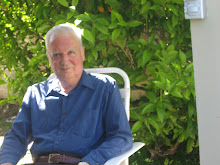In the morning Peter Herczfeld took us to the indoor Budapest market by bus and trolley. The Budapest market is an indoor shopping center with many small vendors. On the first floor was mainly food vendors, selling items such as sausages, meat,
 vegetables, fruit, paprika and strudel. We noted that peaches are called “barack” in Hungarian. I and some other
vegetables, fruit, paprika and strudel. We noted that peaches are called “barack” in Hungarian. I and some other  family members bought and ate some fresh warm sour cherry or apple strudel. Jackie and a few others bought some famous Hungarian paprika for friends back home. On the second floor of the Budapest market were vendors selling many embroidered table covers, children’s dresses, toys, dolls and trinkets.
family members bought and ate some fresh warm sour cherry or apple strudel. Jackie and a few others bought some famous Hungarian paprika for friends back home. On the second floor of the Budapest market were vendors selling many embroidered table covers, children’s dresses, toys, dolls and trinkets.
We walked to a restaurant on the Danube River to have lunch. It was cool and dripping outside, so we ate inside the restaurant. Since I had eaten all the strudel, I had a Cesar salad. We noted that most of the Hungarian food was not spicy as we had expected, but was mild.
After a rest in the hotel, we had planned to go to the Opera, but Mary Bercelli discovered, after we were dressed in our fancy outfits, that the date on the Opera tickets was for Sunday evening.
 We waited in the hotel lobby for the Bercellis to arrive with Peter Herczfeld to decide what we would do for the evening. “We were all dressed up and no place to go”.
We waited in the hotel lobby for the Bercellis to arrive with Peter Herczfeld to decide what we would do for the evening. “We were all dressed up and no place to go”.  We decided after some discussion to make the best of the situation and go to the fancy NY Café for a light dinner and dessert. Budapest had its first major rainstorm during our trip this evening and we waited a few minutes to get the bus when the rain let up.
We decided after some discussion to make the best of the situation and go to the fancy NY Café for a light dinner and dessert. Budapest had its first major rainstorm during our trip this evening and we waited a few minutes to get the bus when the rain let up. We took a tour of the NY Café along with the adjacent fancy Hotel.
We took a tour of the NY Café along with the adjacent fancy Hotel.  We checked the room rates at the hotel which were $500-$1,500/night. We decided the Hotel Helia was a better price performer. The NY Café had a cigar and pipe room, a formal dining area, as well as the more
We checked the room rates at the hotel which were $500-$1,500/night. We decided the Hotel Helia was a better price performer. The NY Café had a cigar and pipe room, a formal dining area, as well as the more informal but very fancy area where we ate.
informal but very fancy area where we ate.  Some of the Hirsch group posed for photos in this fancy area and we enjoyed our evening.
Some of the Hirsch group posed for photos in this fancy area and we enjoyed our evening.  The food was outstanding, including tortellini, chocolate drinks with orange syrup,
The food was outstanding, including tortellini, chocolate drinks with orange syrup, fancy cakes, chocolate scuffle with pistachio ice cream and many other treats. On the bus trip back to the hotel we missed our exit and had to walk balk six blocks, but we were happy to walk back to the hotel and work off some of the food.
fancy cakes, chocolate scuffle with pistachio ice cream and many other treats. On the bus trip back to the hotel we missed our exit and had to walk balk six blocks, but we were happy to walk back to the hotel and work off some of the food.








































